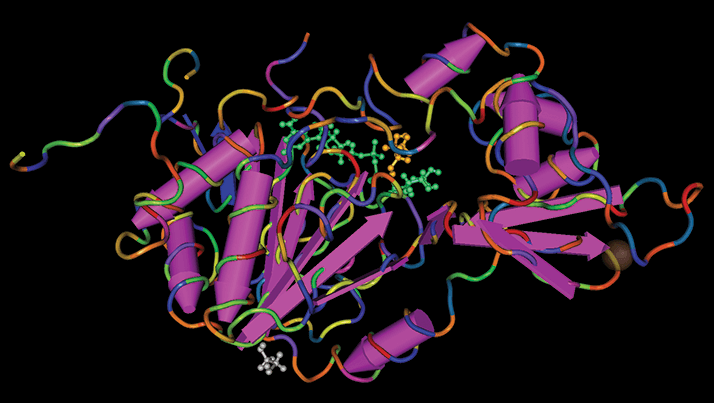
The fate of aging baby-boomers is a hot topic, and any research that aims to slow or reverse the aging process – and the attendant problem of age-related diseases – will be of huge benefit to both patients and society. An important gene in the search for a solution to senescence appears to be SIRT1 which encodes for sirtuin 1, one of a family of protein deacetylases believed to modulate energy metabolism, genomic stability and stress resistance – all of which play a part in the aging process and age-related diseases such as Alzheimer’s and diabetes. The function of SIRT1 in humans has not yet been fully characterized, but based on analog genes in yeast and drosophila (1), it would appear that these genes have some serious anti-aging potential.
Can SIRT1 be exploited pharmacologically? Both endogenous and synthetic activators of SIRT1 do exist, and currently present an interesting avenue for research into aging. One is SRT2104, which researchers based at the National Institute of Health in have successfully used to delay aging and improve lifespan in mice (2). They found improvements in bone and muscle mass, insulin sensitivity and motor coordination, among others. The eye might benefit too. SIRT1 activators SRT674 and SRT501, have both been shown to protect against the development of optic neuritis in a mouse model of the disease (3). The problem is that no human trials have shown any anti-aging benefit. GlaxoSmithKline paid US$720 million to acquire Sirtris Pharmaceuticals and its portfolio of sirtuin-based anti-aging candidate molecules back in 2008. Alas, in March 2013, they closed down Sirtris, although they continue to develop Sirtris’ compounds as part of their wider drug discovery programs. It’s unclear how high a priority GSK have put on these compounds, but a quick glance at clinicaltrials.gov reveals that there are currently no ongoing clinical trials of SIRT activators. This means that the hunt for the fountain of eternal youth (and good vision) continues.
References
- L. Guarente, “Sirtuins in Aging and Disease”, Cold Spring Harb. Symp. Quant. Biol., 72, 483–438 (2007). E.M. Mercken, S.J. Mitchell, A. Martin- Montalvo, et al., “SRT2104 Extends Survival of Male Mice on a Standard Diet and Preserves Bone and Muscle Mass”, Aging Cell, DOI: 10.1111/acel.12220 (2014). K.S. Shindler, E. Ventura, T.S. Rex, et al., “SIRT1 Activation Confers Neuroprotection in Experimental Optic Neuritis”, Invest. Ophthalmol. Vis. Sci., 48, 3602–3609 (2007).
